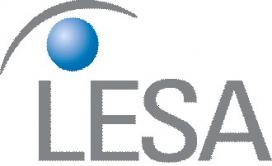Researchers use MEMS-based Spatial Light Modulator to Capture Light from Multiple Sources
TheCenter for Lighting Enabled Systems & Applications (LESA), an NSF-funded Engineering Research Center (ERC) headquartered at Rensselaer Polytechnic Institute (RPI), used a MEMS-based Spatial Light Modulator to resolve multiple optical targets for a mobile visible light receiver device. This approach aggregates incident light from a broad set of pixels.
The research demonstrates that signals from two sources can be independently captured by mirrors that direct incident light to a photodetector. This suggests the possibility of tracking very large numbers of targets. Future versions of this concept device will scale to receiver arrays that are more easily fabricated.
Mobile use cases of MIMO VLC systems that use static optics have poor channel matrices that result in significantly degraded performance or outages, since channel gains depend on the relative position between the transmitters and the receivers.
Various MIMO VLC receiver architectures have been proposed to mitigate this performance loss that arises due to mobility. These include high-resolution imaging VLC receivers that use many extra pixels to reduce the likelihood of linear dependence between columns of the channel matrix.
Unfortunately, this approach requires compromises in the performance of each photodetector due to constraints on the total size, power, and number of pixel readout circuits available to the photodetector array. Non-imaging VLC architectures that use static optics exhibit similar tradeoffs between reliability and performance.
The new demonstration enables the receiver to adapt to changes in the free space channel matrix without compromising the performance of each photodetector.



